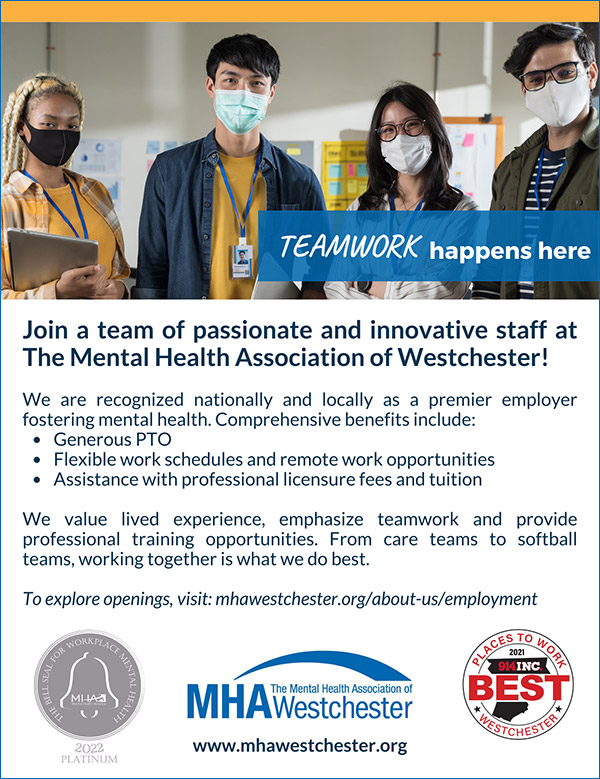When we talk about stigmatization of people with behavioral health conditions in employment, many of us think of Equal Employment Opportunity disclaimers many companies place at the end of their job descriptions. Others would mention the Americans with Disabilities Act and name drop reasonable accommodations. Some of us may just have a long list of anecdotes of our participants being treated unfairly in hiring or firing. What we may not often think of is a very common, but considerably less discussed, source of stigma: individuals with disabilities themselves. Societal stigma and discrimination may dominate the discourse; however, for those with living with behavioral health conditions, one might argue that self-stigmatization is more impactful.

Research on self-stigma is gaining traction, as is the creation of formal resources for individuals and their supports to directly combat it. Attitudes towards one’s own condition have been shown to predict a host of major negative affects if not addressed. Among those cited by Researchers Patrick Corrigan and Deepa Rao (2012) include “decreased healthcare service use, poor health outcomes, and poor quality of life.” The authors also reference what is referred to as the “Why Try” effect, which very succinctly sums up the effects of self-stigma on employment outcomes in particular. They proffer this example: “Why should I seek a job as an accountant? I am not deserving of such an important position. My flaws should not allow me to take this kind of a job from someone who is more commendable.” This sentiment is unfortunately a common one echoed by countless recipients of vocational rehabilitation services and functions as a self-imposed barrier to employment opportunities before a candidate even submits a single application.
In my work as a Vocational Rehabilitation Counselor, I have witnessed self-stigma play out in a curious phenomenon that is an uncomfortable reminder of how under-emphasized vocational aspirations are in our therapeutic work: the puzzled look on a person’s face the first time they are asked about their work goals. Regardless of a specific diagnosis or level of support need, there is too-often genuine surprise at the mention of work. Skepticism can, however, give way to engagement and, on a good day, optimism.
Well-meaning but ultimately discouraging contributions from families, communities, and even healthcare providers have compounded legitimate concerns and fed existing self-doubt. While not unique to the behavioral health realm, it appears a disproportionate number of those diagnosed with a significant mental health condition have been cautioned that working is “too stressful” and may trigger an increase in symptoms. Similarly, people who receive Social Security or other benefits are warned that working will decrease or cut off their benefit. These cautions are just two of those often recited by those seeking employment support that are both incorrect and stemming from those in truly supportive roles.
While problematic on a number of levels, we are sending the message that investing in one’s vocational growth is “not worth the risk” and more subtly, reinforcing that their condition is incompatible with success. This makes it increasingly important for us to challenge our own beliefs about the role of work in a person’s recovery. As Researchers Phelan, Link, and Dovidio (2008) explain, self-stigma is not an inevitable result of receiving a “stigmatized” diagnosis. Across the field of behavioral health, several major approaches are emerging, including individual adjustment counseling work, manualized group approaches such as the “Ending Self-Stigma” program, Peer Service provision, and on a larger scale, NAMI’s “In Our Own Voice” program (Corrigan, Rao, 2012).
As practitioners, we can intervene at the most basic level by opening the door to explicit discussions of self-stigma and examining our clients’ internal narratives. The following is a brief example of a person whose most impactful barrier to employment turned out to be her own self-esteem:
Carol* was a 61-year-old, career-changer diagnosed with severe Major Depressive Disorder and referred for individual placement services. She struggled to maintain motivation in her job search, expressing near constant doubts about her potential, skills, and capacity to work. She worked with an Employment Specialist for several months with no progress and rejected every lead. The Employment Specialist then re-focused their work on addressing her negative self-beliefs. As a direct result, Carol agreed to open up her job search to include positions which would require her to learn new technological skills. With encouragement and practical support, she went from having only pre-digital receptionist experience to landing a medical secretary position in a busy doctor’s office and ultimately mastering her first electronic health record database! Of her experience, she said that despite having seen a number of therapists, psychologists, and doctors, “[employment services] just worked in a way that nothing else had” to reinvigorate her progress towards recovery.
We as behavioral healthcare providers are in an unparalleled position to support others towards greater agency and self-efficacy; examining our role in addressing self-stigma and calling attention to its influence is an essential way that we can bolster our clients’ efforts not only towards employment but virtually any life goal they may be pursuing. It is also an important opportunity to change the discourse about work with our participants from an afterthought of treatment to a viable source of growth and recovery.
* Name and some details have been changed for privacy reasons.
Danielle Ramachandran, MS Ed, CRC, is Program Director of Employment Services at MHA of Westchester.
References
Corrigan, P. W., & Rao, D. (2012). On the self-stigma of mental illness: stages, disclosure, and strategies for change. Canadian journal of psychiatry. Revue canadienne de psychiatrie, 57(8), 464–469. https://doi.org/10.1177/070674371205700804
Phelan, J. C., Link, B. G., & Dovidio, J. F. (2008). Stigma and prejudice: one animal or two?. Social science & medicine (1982), 67(3), 358–367. https://doi.org/10.1016/j.socscimed.2008.03.022
Sirey, J. A., Bruce, M. L., Alexopoulos, G. S., Perlick, D. A., Friedman, S. J., & Meyers, B. S. (2001). Stigma as a barrier to recovery: Perceived stigma and patient-rated severity of illness as predictors of antidepressant drug adherence. Psychiatric services, 52(12), 1615-1620.






